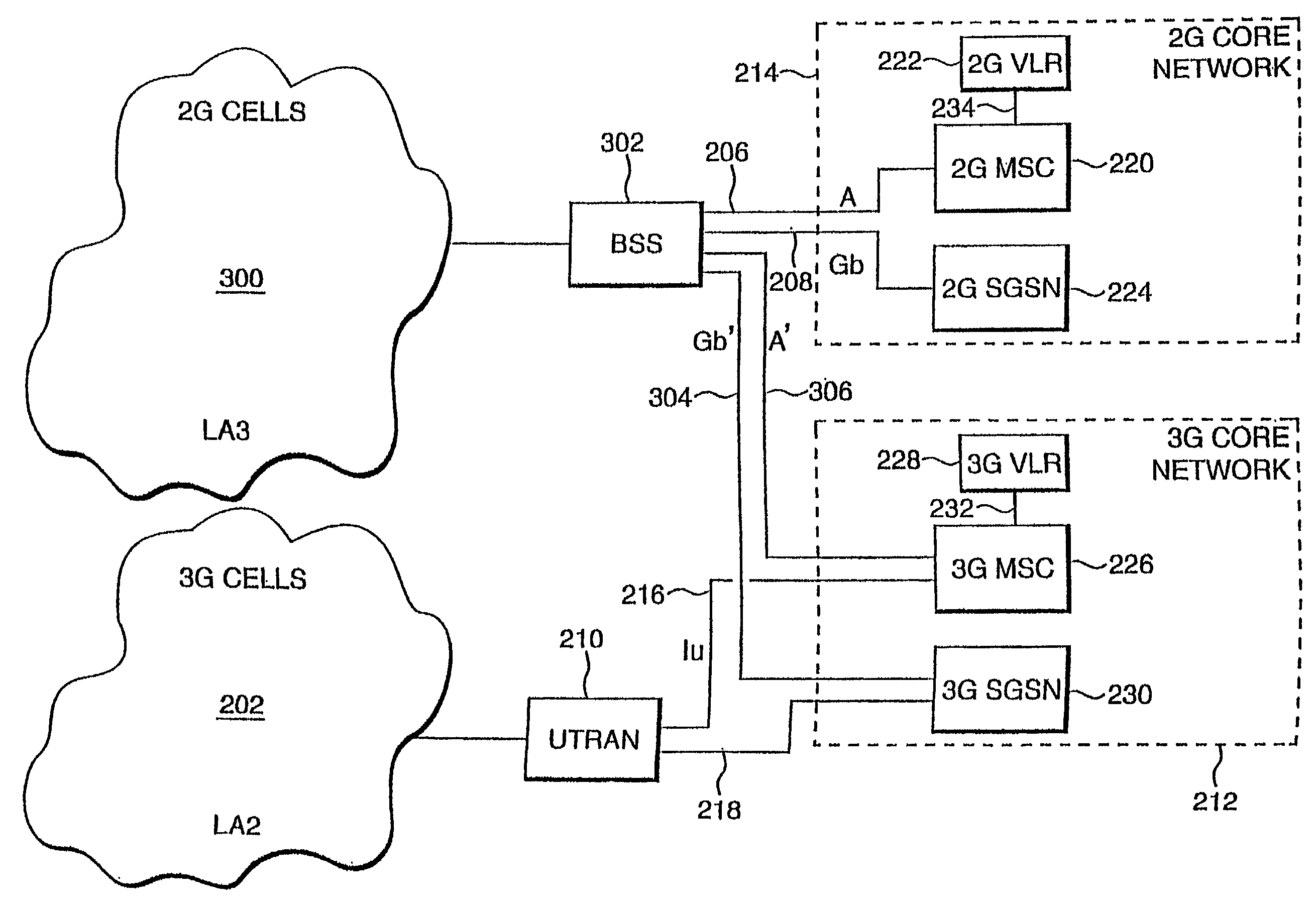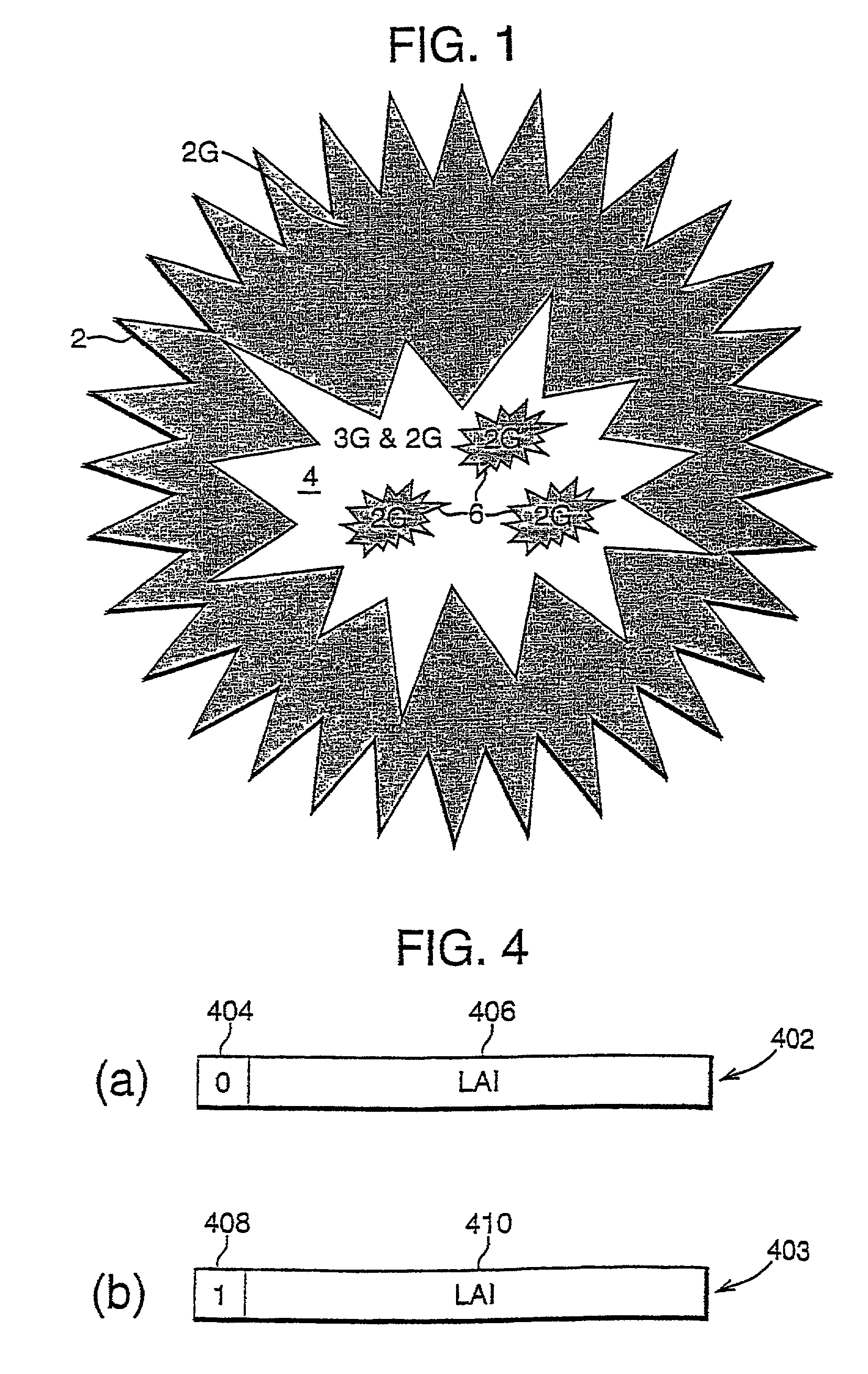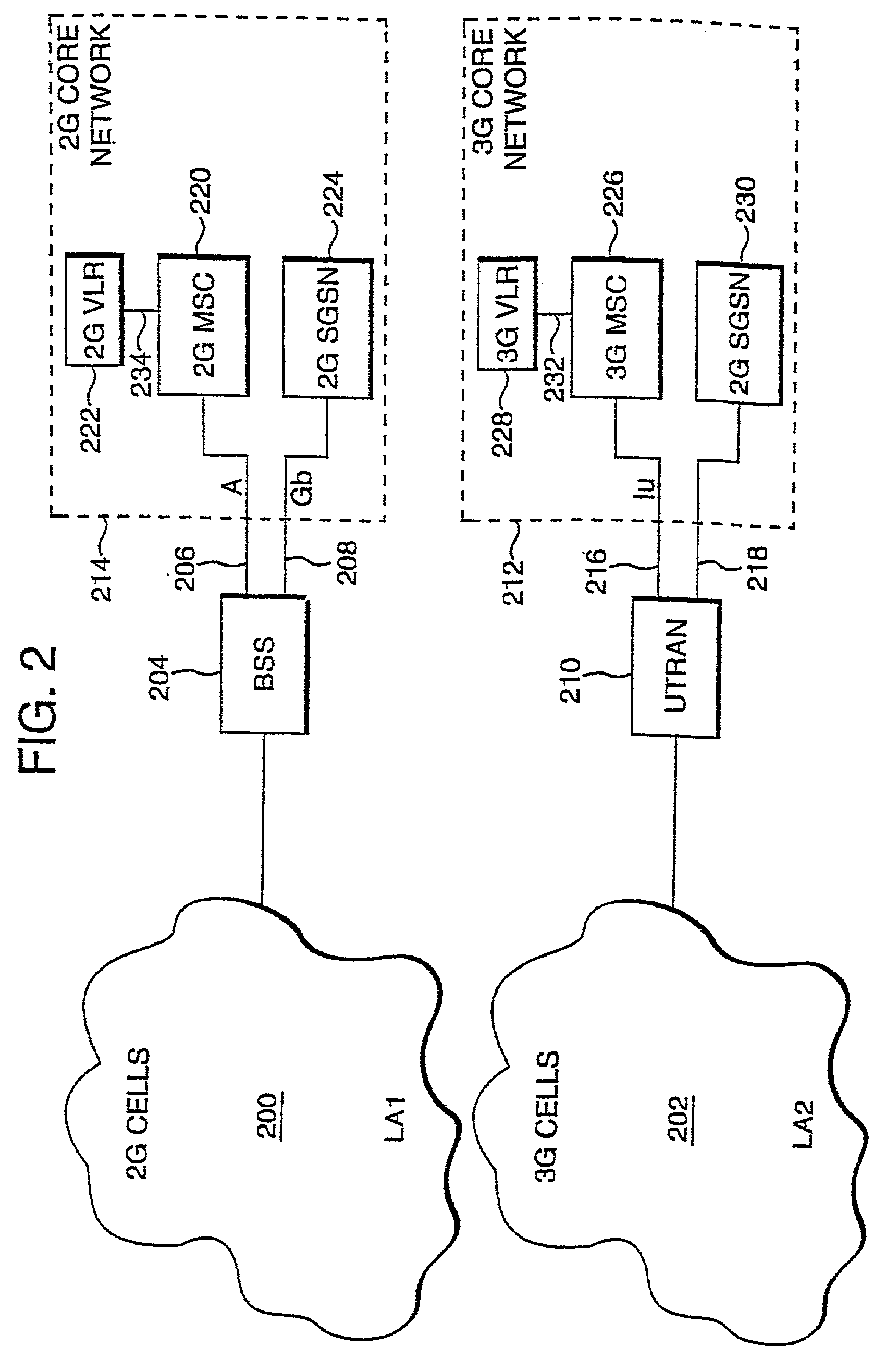Core network allocation for GSM/UMTS
a network allocation and core technology, applied in the field of network architecture improvement, can solve the problems of small pockets (such as inside buildings) without umts coverage, inability to expect contiguous coverage of umts radio, and poor penetration of in-building gsm
- Summary
- Abstract
- Description
- Claims
- Application Information
AI Technical Summary
Problems solved by technology
Method used
Image
Examples
Embodiment Construction
[0018]The present invention will be described hereinafter by way of reference to the particular non-limiting example of the deployment of a 3rd Generation (3G) mobile system alongside a 2nd Generation (2G) mobile system. In the particular example the 2G system is a GSM / GPRS system, and the 3G system is a UMTS system. The invention, however, is not limited to such a specific environment.
[0019]FIG. 1 illustrates the coverage expected to be provided by UMTS in a GSM radio access area. The shaded areas represent areas with only GSM coverage. The non-shaded areas represent areas with both GSM and UMTS coverage. Thus the whole of the area 2 is provided with GSM coverage. The smaller area 4 within the area 2 is intended to be provided with UMTS coverage in addition to GSM coverage. However pockets, designated by reference numeral 6, exist within the UMTS coverage area 4, such that only GSM coverage is provided in the pockets 6.
[0020]The current proposed network architecture for supporting ...
PUM
 Login to View More
Login to View More Abstract
Description
Claims
Application Information
 Login to View More
Login to View More - R&D
- Intellectual Property
- Life Sciences
- Materials
- Tech Scout
- Unparalleled Data Quality
- Higher Quality Content
- 60% Fewer Hallucinations
Browse by: Latest US Patents, China's latest patents, Technical Efficacy Thesaurus, Application Domain, Technology Topic, Popular Technical Reports.
© 2025 PatSnap. All rights reserved.Legal|Privacy policy|Modern Slavery Act Transparency Statement|Sitemap|About US| Contact US: help@patsnap.com



